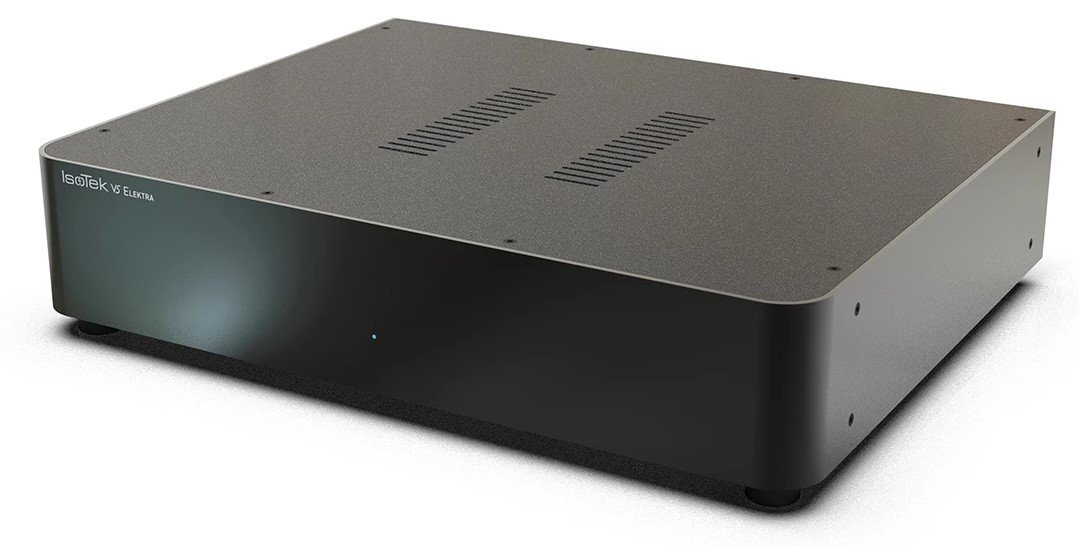POWER & SOUND - HOW WE POWER OUR HI-FI MATTERS
/Matt from our Cardiff store is once again on his quest for audio perfection, and this time he faces a familiar adversary in the world of hi-fi: unwanted noise…
This month’s part of the journey focuses on the very thing that feeds our hi-fi systems — our old friend, electricity. But how does electricity create noise in our hi-fi systems, we hear you ask? And more importantly, how do we fix it? Let’s follow Matt on his journey and see where it takes us.
Like many of you wonderful hi-fi enthusiasts and music lovers out there, I’m always looking — and more importantly, listening — for ways to improve my own listening experience. I’m constantly exploring new ways to fine-tune not only my system but also our customers’ systems, squeezing every bit of performance out of them — whether that’s through the source, amplification, speakers, or how we connect each component.
But there’s one persistent problem we encounter from time to time in the wonderful world of hi-fi — yes, you guessed it — unwanted noise. Whether it’s a buzz, a hum, or rogue radio frequencies, it all gets in the way of the listening experience, doesn’t it?
Sounds of Silence (And We’re Not Talking Simon & Garfunkel)
One of the biggest things we notice when listening to our favourite music on our hi-fi is noise. It’s always the quiet moments in music we hear the most — whether it’s the space between instruments and vocals or the brief pause between tracks, it’s often that bit of unwanted noise that affects the overall performance of a song. We also find that, because of this noise, we lose the separation between musical instruments and vocals — which is something we all want and strive for in our hi-fi systems.
Turn Up the Music and Turn Down the Noise
So what noise am I talking about, I hear you ask? Well, I’ll give you a clue — it’s what powers our equipment. Yes, it’s our old unruly friend: electricity. Cast your minds back to an old blog of mine that some of you may have read — for which I’m extremely grateful to all of you, especially considering I have a tendency to go on!
audiolab dc block
My previous blog covered similar ground — unwanted noise and mains noise I was experiencing at the time, and the solutions to that pesky problem. As you may know, I’ve been using a Wireworld Matrix trailing socket and an Audiolab DC Block to help power my various hi-fi components over the last couple of years. Both pieces of kit have done an amazing job of cutting out unwanted mains noise, and I still highly recommend this combination to all of you out there, as I believe it’s a great, reasonably priced way of solving the problem without breaking the bank.
Wireworld matrix 2 without cable
Back to the Drawing Board
So why am I revisiting this problem again, even though I feel my current solution works well? Well, as we all know, there’s always room for improvement, right? And you all know I’m a bit of a gear head.
At the Bristol Hi-Fi Show 2025, we chat with Tom Foyle from IsoTek about the importance of clean power in Hi-Fi. He explains how their latest products reduce noise and boost system performance, and why power management is key but often overlooked.
Since joining Audio T I usually work at the Bristol Hi-Fi Show every year, and one thing I noticed was that a couple of the exhibitors had one brand in common when it came to power distribution: Isotek. In fact, the main room demonstrating Isotek was run by Sound Service, who distribute IsoTek as well as brands like Manley amplification. A great many people at the show told me how good their room sounded. Sadly, I did not get a chance to pop over to see them, but it did pique my interest in IsoTek and the effect their products have on hi-fi equipment.
Fast forward a couple of weeks — we had a visit and training session with Giles from IsoTek and our representative from Sound Service, Alex. They brought a few IsoTek products with them, including:
Polaris V5 mains conditioning trailing socket from their Discovery range,
and the rather impressive V5 Elektra mains conditioner.
Giles also brought with him a fantastic piece of equipment — a mains noise analyser, which shows any frequencies found in the power grid and just how noisy it can be. Believe me, when Giles plugged the analyser into our wall sockets unfiltered — yes, the analyser flatlined.
Before I talk your ears off about what a difference IsoTek’s gear made, let us talk a little about their history and their aim.
Isotek: Clean Power = Pure Sound
IsoTek was started way back in 2001 by Keith Martin in Hampshire. Keith’s aim was to develop a way of filtering the current coming out of the wall sockets in our homes. His company has since developed and evolved power management and filtering solutions for both studio (i.e. pro audio) and domestic use, right up to the present day.
When we think about it, the first input into our amplifiers is simply electricity. It is the raw material which the electronics we own need to function. The quality of that first input will affect performance — either positively or negatively.
The mains supply in our homes is distorted by numerous factors, which erode the performance of our hi-fi systems. As we know, the electronic devices we use in our homes continue to proliferate, and as the demand for electrical power intensifies, the quality of electricity often diminishes by the time it reaches our hi-fi equipment.
The escalation of mains-borne ‘noise’ means that the need for mains conditioning is becoming more important. This, of course, is where IsoTek comes in.
But what devices around the home affect this? To name but a few: your computer, your kitchen appliances. ‘Common mode noise’ is also ever-increasing thanks to wireless networking in the home, with mobile phones, Wi-Fi and Bluetooth bathing us in a sea of interference. Again, this is where IsoTek’s various conditioning and filtering solutions come into play.
Now Back in the Room! How Did the Isotek Equipment Change Our Listening Experience?
proac d20R
Let us set the scene. Before Giles and Alex arrived, we set up a system in our demonstration room. The system consisted of the Cyrus 40 ST streamer, the Cyrus 40 Amp with 40 PSU Power Supply, and on the speaker front, a pair of ProAc Response 20R floor-standing speakers we are currently trialling. On the mains side, we plugged the source and amplification directly into the Wireworld Matrix 2.
The system already sounded pretty good. Then we changed a few power options with Giles. Starting with the trailing socket, we swapped out the Wireworld Matrix 2 for the Isotek V5 Polaris trailing socket. Before we hit play on the streamer, Giles plugged the analyser into an open socket on the Polaris, and we found the mains noise was significantly reduced.
With everything plugged in and running well, we hit play on the BluOS app and listened to a track we know very well — John Mayer’s Slow Dancing in a Burning Room. To say we were pretty happy with the result is an understatement. But just as we thought it could not get any better, Giles and I added the new EVO3 Syncro DC Blocker. This, I feel, made one of the biggest changes — we could really hear the space between instruments on the track. Even small details, like John Mayer’s pick hitting the neck pickup on his Fender Strat. As I always say: there is perfection in imperfection.
The final change we made was the biggest improvement of all — we swapped out the V5 Polaris for the V5 Elektra power conditioner. This change really brought those finer details in the song to life.
To say we were blown away by the results is selling IsoTek’s range short — but nothing tells us more than a change to our own hi-fi system. So I thought I would bring home the V5 Polaris and the Syncro EVO3 DC Blocker to try in my own surroundings.
isotek v5 Polaris - SYNCRO - initium power cables
And Now It’s Time for My Favourite Thing to Do… You Know What Time It Is — It’s Home Demo Time
With my cup of coffee at the ready — here we go.
As you all know, my home hi-fi system is not too dissimilar to the system we set up in our demonstration room in the store. The main difference is the sources I am using, which are my Rega Planar 6 and my Cyrus CD Transport. My speakers are Spendor D7.1.
The keen-eyed among you may notice from my system pic that there is a Cyrus 40 PSU in there, connected to my 40 Amp. My reason for this? I thought I would try it at home to hear the difference it makes in my own hi-fi. I would like to tell you more, but I feel the power supply will be a subject for another upcoming blog.
Now we are all set up — let us continue with this sonic experiment. But before I talk your ears off about my findings, here is some of the music I used:
Matts hiome setup
Format: Vinyl
Artist: Anthrax
Album: We’ve Come for You All (2003)
Track: Safe Home (Acoustic Version)
Format: Vinyl
Artist: Led Zeppelin
Album: Houses of the Holy (1973)
Track: No Quarter
Format: CD
Artist: Zakk Wylde
Album: Book of Shadows (1996)
Track: Evil Ways
I began my listening session with my standard power distribution setup: the Wireworld Matrix trailing socket with the Audiolab DC Block — and the addition of the Cyrus 40 PSU, of course. With my system already sounding great, I then swapped out the Wireworld Matrix for the IsoTek Polaris. Straight away, I could hear the noise floor drop — especially on the Anthrax track. Being an acoustic version, I could really hear how close John Bush was to the mic — even down to Rob Caggiano’s string noise when he changed chords.
Then I added Isotek’s DC Blocker. There’s only one word for it: wow. What a massive change in sound. I could hear more separation between vocals and instruments, and greater clarity. For instance, on Zakk Wylde’s track — which is quite busy — I could really hear the string definition on his Alvarez 12-string guitar, and his vocals seemed more prominent and forward in the mix.
In Conclusion
I have always recognised the importance of good power cables and how equipment is fed — i.e. how we power our equipment. I now feel that IsoTek takes how we distribute and filter power to the next level, and I also believe you cannot put a price on that.
In other words, even at the Discovery level of IsoTek’s power distribution, I feel they are worth every penny. But the question is: will I purchase the Polaris and the DC Block to go into my system? (Sorry, wallet...) It’s a big, resounding YES.
Don’t just take my word for it — why not try the Polaris and the DC Block for yourself and tell me what you think?
Thanks for taking the time to read my blog — I hope you enjoyed it.
Matt Aaron - Audio T Cardiff
If you have any questions about any of the equipment featured in this article, or any other Hi-Fi or home cinema enquiries, be sure to Contact Us.
If you’ve enjoyed this, why not go ahead and read some more of our other blogs, and be sure to follow us on our social media channels below…
IsoTek can be found at the following Audio T stores















